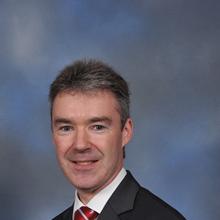Background
Circular Economy (CE) thinking has rapidly becoming mainstream in society today. Various industries and are beginning to adopt policies with circularity in mind. Natural resources are being consumed at an unprecedented rate. Since 1970, global use of resources has tripled and this continues to escalate exponentially. The so-called ‘Linear Economy’ has contributed to massive changes in climatic conditions and biodiversity loss. The former has manifested in form of increased heat, ferocious and persistent wildfires, prolonged droughts in different parts of the world. Such unfettered linearity, if unchecked, could result in a further deterioration of natural ecosystems as well as posing a significant risk to the supply of resources and value chains. Linear economic models also result in production of huge amount of waste. Recent estimates show that only 8.6% of resource usage is circular, meaning that over 90% of resources are not in a closed loop.
The CE is an expansion of the waste hierarchy, whereby conventional waste streams that were often a cost to an organisation are viewed as source of resources and revenue, whilst minimising or even reversing their environmental impact. Recovering resources from previously used materials will replace the need to extract virgin resources via mining practices that are expensive, associated with environmental impacts, and in the case of products made from speciality and rare earth metals, provide resource security.
Short product lifecycles and rapidly advancing technology has significantly contributed to annual global generation of approximately 54 million metric tonnes of waste electrical and electronic equipment (WEEE) with a global average of over 7 kg per person. Less than 20% of WEEE is documented to be treated appropriately and the rest mostly ends up in landfill or is disposed of via informal means, often in poor conditions. Four key global issues make WEEE a priority waste stream: global quantities of WEEE; resource impacts; potential health and environmental impacts; and ethical concerns. WEEE is non-homogeneous and forms a complex mixture of materials and components, many of which are potentially highly toxic. It also contains high residual value metals and hence represents a huge loss of key metals (if discarded) or a potential reservoir (if hibernated). E-products contain metals classified as critical raw materials (CRMs) - those for which supply and economic impact is at risk and higher than for other raw materials.
Objectives
Driven by the UN’s Sustainable Development goals, which has identified the issue of electronic waste growing significantly and the challenges of recycling/reusing electronic components, there is a need to research new possibilities in sustainable and recyclable printed electronic devices. The change in business models and industry and consumer device flows will also have implications. The circular model puts more emphasis back onto producers who have more knowledge to make an impact on the sustainable use of electronic devices than traditional waste management companies.
The proposed study, which will be carried out in conjunction with the Arm-ECS Research Centre, aims to explore the intersection of design and the circular economy. The first phase aims to identify circular opportunities in the electronics sector and will involve a literature review of both academic and grey literature and an accompanying SWOT analysis, with a focus on electronic components and the boards/packages (whole sub-systems, parts, materials) that make up electronic systems.
The second piece of work, an exemplar case study, will focus on the partnership between Arm and the gaming & consumer electronics sectors (e.g. tumble dryers, washing machines, wearables). Areas of focus will include raw material/CRM sources, manufacturing processes, supply chain and Internet-of-Things (IoT) sensors.
Analysis of the following scenarios will be evaluated:
• Product as service (PaaS) and hybrid solutions (products and services combined into innovative offerings) business models: companies such as Philips and Xerox have successfully transitioned to a model whereby their products are sold as a ‘service’. This means the companies retain ownership of the products are wholly responsible for its end-of-life management. An example of how a manufacturer fits into a PaaS chain is illustrated here: https://www.engineering.com/story/moving-from-product-to-product-as-a-service).
• Design for repair and reuse: feasibility of modular designs in electronics to ensure security, reliability, quality, ease of disassembly, easy upgrade of performance, repair and reuse of components, enabling recurring revenues & deeper customer relationships.
Read the final report
Williams, I.D. and Shittu, O.S. (2022). Development of sustainable electronic products, business models and designs using circular economy thinking. Detritus, 21, 45-54.
Project Lead

Dr Lanre Shittu, Research Fellow
Lanre Shittu is a Researcher working with Prof. Ian Williams in the area of waste electrical and electronic equipment. Lanre has a background in Envir
Read More